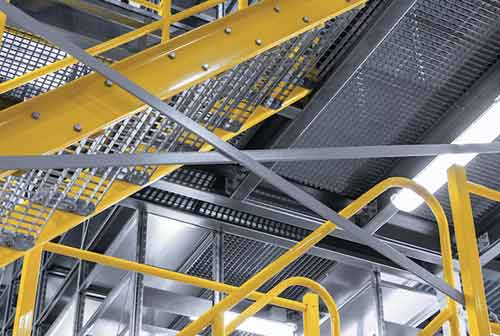Glass reinforced plastic (GRP), also known as fiberglass, is a composite material made of glass fibers embedded in a polymer matrix. GRP has many advantages over traditional construction materials such as steel, concrete, wood, and metal. GRP is lightweight, strong, corrosion-resistant, weather-resistant, non-conductive, and easy to mould and shape. GRP can also be designed to have specific properties for different applications. In this article, we will explore some of the uses and benefits of GRP in the construction industry.

Underground Piping
One of the main applications of GRP in the construction industry is underground piping. GRP pipes are ideal for transporting water, sewage, gas, oil, and other fluids. GRP pipes are durable and can withstand high pressure, temperature, and chemical attacks. GRP pipes are also flexible and can be installed using trenchless methods such as pipe jacking, microtunneling, horizontal directional drilling. These methods reduce the environmental impact and cost of excavation and restoration. GRP pipes can also be used to rehabilitate damaged pipes by lining them with GRP liners. This can extend the service life of the pipes and improve their performance.
Another application of GRP in the construction industry is storage containers. GRP containers are used to store various materials such as water, chemicals, fuels, and wastes. GRP containers are leak-proof and fire-resistant. They can also resist corrosion, UV radiation, and temperature fluctuations. GRP containers are easy to transport and install. They can be customized to fit different shapes and sizes. GRP containers are also recyclable and environmentally friendly.

GRP can also be used to create structural elements such as beams, columns, panels, roofs, floors, walls, handrails, ladders, grates, walkways. GRP structural elements have high strength-to-weight ratio and can support heavy loads. They can also be designed to have different colors, textures, and finishes to match the aesthetic requirements of the project. GRP structural elements are easy to assemble and disassemble. They can also be prefabricated to reduce the construction time and cost.
Conclusion
GRP is a versatile and cost-effective material for construction. It has many advantages over traditional materials such as steel, concrete, wood, and metal. GRP can be used for various applications such as underground piping, storage containers, structural elements. GRP can also be designed to have specific properties for different purposes. GRP is a material of the future that can help improve the quality and efficiency of construction projects.
 +86 15303735673
+86 15303735673 Jessica@frpzs.com
Jessica@frpzs.com
 Technical Data
Technical Data











